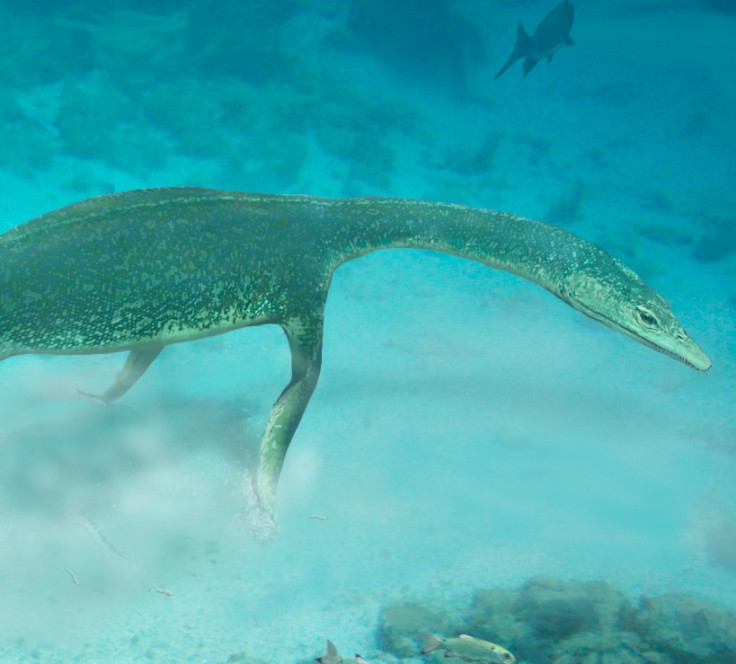Ancient Paddle Prints Show How Nothosaurs Swam 245 Million Years Ago

Ancient sea reptiles from 245 million years ago were able to swim with the help of paddle-like limbs, scientists have discovered.
Nothosaurs lived during the Mesozoic period, 252-66 million years ago. They were top predators of the Triassic coasts around 245 million years ago and measured between one and three metres in length.
The marine reptiles were semi-aquatic hunters with long bodies and paddle-like limbs that helped propel them forward. However, the mode of swimming has long been debated – some say they rowed themselves along with a back and forth motion, while others suggest they "flew" underwater, by sweeing their forepaddles in a figure of eight motion.

Scientists from the University of Bristol, together with colleagues from China, say paddle prints recently on an ancient seabed in Yunnan have solved this mystery.
The tracks were arranged in pairs in a long series of 10 to 50. They followed straight lines and sweeping curves.
The size and spacing suggest they were made by the forelimbs of nothosaurs and showed they moved over the seafloor by rowing their forelimbs in unison – the first evidence to show how they swam.
Study co-author Michael Benton said: "When I first saw the site, I couldn't believe the amazing quality of the fossils. It's quite unusual to find skeletons of marine reptiles such as the nothosaurs so close to evidence of their tracks."

Qiyue Zhang, leader of the research, added: "We interpret the tracks as foraging trails. The nothosaur was a predator, and this was a smart way to feed. As its paddles scooped out the soft mud, they probably disturbed fishes and shrimps, which it snapped up with needle-sharp teeth."
Nothosaurs and other marine reptiles were new members of recovering ecosystems after the Permo-Triassic mass extinction event, that killed off about 90% of all species on Earth.
Co-author Professor Shixue Hu said: "Here we see a detailed snapshot of how life was within 8 million years of the mass extinction. It took all that time for the Earth to settle down from the cataclysm, and the arrival of these large, complex marine predators shows us the ecosystems had finally rebuilt themselves, and life could be said to have recovered from the crisis."
© Copyright IBTimes 2025. All rights reserved.





















